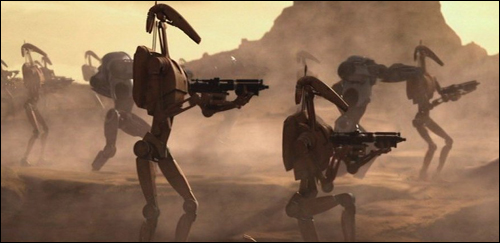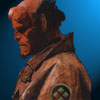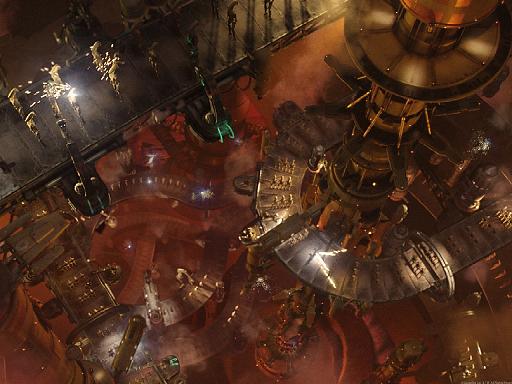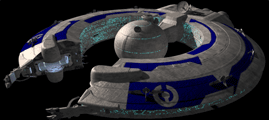Welcome to the Imperial Archives! The main source of information in the Galactic Empire. Be sure to check out the Editing Protocol before making new pages or editing articles. If you need help feel free to contact the Archives manager at archives@swc-empire.com !
Trade Federation
| Trade Federation | |

| |
| Political information | |
| Type of government | Constitutional federation |
| Founding document | Articles of Confederation |
| Constitution | Charter of the Trade Federation |
| Head of State | Viceroy Jacob Jansen |
| Head of Government | Duceroy Olwin Froon |
| Commander-in-Chief | Viceroy Jacob Jansen |
| Executive branch | Directorate |
| Legislative branch | Cabinet |
| Judicial branch | Department of Justice |
| Societal information | |
| Territory | Airon Sector Anthos Sector Balmorra Sector Darlonn Sector Ktilac Regions Neshig Sector< br/>Nouane Sector Orus Sector Prackla Sector Terr`skiar Sector Zaric Sector Zeemchat Cluster |
| Capital | Taanab |
| Official language | Galactic Basic |
| Currency | Imperial Credits |
| State religious body | |
| National holiday | Federation Day
Corbin's Birthday |
| Historical information | |
| Formed from | Lorell Raiders |
| Date of establishment | Year -1 Day 28 |
| Date of dissolution | |


The Trade Federation is one of the galaxy's largest government factions, with over 200 billion citizens. The Federation, which initially gained galactic prominence as a monopolistic trading empire, was rebuilt on the foundations of honor, integrity and profit. It has always maintained those foundations, striving to hold its members to the lofty goals that come with such a motto.
Although dominated for most of its early history by Neimoidians, the Trade Federation now welcomes recruits from all races and walks of life. The Federation is one of the most talented and diverse organizations in the galaxy, and those qualities are reflected in high profits and high salaries for the entire faction. The Federation has a long history of technological achievement, and is fully committed to innovation and technological progress and implementation of new ideas. In addition to this, the Federation is still steeped in its commercial roots, delivering basic and luxury goods to billions of clients galaxy-wide and generating prosperity for its citizens on dozens of planets.
Contents
Structure
The Trade Federation can be broadly separated into two categories: government bodies (or branches of the Trade Federation per se), and nationalized factions.
Government
The Trade Federation's executive leader is known as the Viceroy. The Viceroy functions as Head of State, leader of the cabinet and Commander-in-Chief of Trade Federation's armed forces. He typically rules from one of two locations: the Viceroyal Palace on Vinsoth or his mobile command ship, the TFF Prosperity. The Viceroy's second-in-command is called the Duceroy, who shares in performing the Federation's day-to-day operational duties.
The Trade Federation consists of several ministries to carry out the mission of the Federation. Each of the ministries is made up of departments that specialize in specific duties of the ministry:
| Ministry of Defence | Ministry of the Interior | Ministry of Production | Detached Departments |
|---|---|---|---|
| Dept. of the Navy | Dept. of Logistics | Dept. of Manufacturing (BAW) | Evocati Order |
| Federation Security Service | Dept. of Industry | Dept. of Naval Production (KDY) | Dept. of External Affairs |
| Dept. of Resources (CG) | Dept. of Robotics (DMC) | Dept. of Culture | |
| Dept. of Admissions | Dept. of Vehicle Engineering (TU) | Dept. of Justice |
The leader of each ministry, in addition to overseeing the portion of the government in his or her purview, serves as a member of the Trade Federation Cabinet. Lower than the ministry level, the Trade Federation Directorate serves the needs of the Federation on a departmental level, discussing broad issues or needs in specific areas of the administration of Federation.
If he so chooses, the Viceroy may appoint a Regent, a special adviser who serves on the cabinet and succeeds the Viceroy in case of emergency or the incapacitation of the Viceroy. In such an event, the line of succession for leadership of the Trade Federation is as follows:
- Regent (If appointed)
- Duceroy
- Minister of the Interior
- Minister of Defence
- Minister of Production
- Deputy Minister of the Interior
- Deputy Minister of Defence
- Deputy Minister of Production
Cabinet
The Trade Federation Cabinet is made up of the Viceroy, Regent, Duceroy and the three Ministers of the Trade Federation. It normally consists of these six members and is considered to be the decision-making body of the Trade Federation. Important matters are brought to the cabinet for consideration by the Viceroy. The cabinet has the power to appoint special advisers to aid in decision-making, endowing them with the right to the secret chambers of the cabinet proceedings. Ministers and advisers generally serve a lifetime term as cabinet members, and are responsible for appointing a new Viceroy if the current one steps down without nominating a successor.
Chief Justice

|
| Techno Union is one of the longest continuously-partnered nationalized factions to work with the Trade Federation. |
The Chief Justice is an official charged with the duty of interpreting Trade Federation laws, including the Federation's Charter and Articles of Confederation. He is the supreme authority in all Federation territories on legal questions, and his ruling is considered law on any interpretation of Constitutional matters. He answers only to the Viceroy.
The Chief Justice also must personally conduct all court cases concerning charges of grievous offenses against officials and members of the Trade Federation, presiding over a jury consisting of the cabinet and a random selection of other members. Lawyers for the prosecution and the defense are both appointed by the government.
Nationalized Factions
To aid in the functions of the government branches, the Trade Federation also retains several nationalized factions that specialize in areas not easily coordinated by the government. These factions are:
- Baktoid Armour Workshop
- Commerce Guild
- Dorinian Military Corps
- Kuat Drive Yards
- Techno Union
These factions specialize in production, mining and paramilitary support to further the goals of the Federation, and their hierarchies are closely intertwined with the daily administration of Federation business.
Commendations and Awards
The Federation has a wide variety of commendations that are awarded to Federation members as well as to members of its nationalized factions. These awards are given for exemplary service to the goals of the Federation, and they are prized quite highly by some members.
History
The Founding Era

|
| Caritas and Filordi Co-founded the Trade Federation |
The origins of the Trade Federation have been obscured by the many years since its foundation, but it is generally held that the Neimoidians joined with several other races in creating a cooperative trading endeavor spanning several planets. Most historians believe the Federation was probably a Neimoidian idea, as that race assumed leadership of the Federation throughout its whole first era. The Caritas and Filordi races were among the earliest recorded sentient species to join the fledgling Trade Federation.
As the Trade Federation grew in power and scope, its leadership became synonymous with that of the planet Neimoidia, and the Federation's leadership position was merged with the royal rule of Neimoidia. Ultimately, the Federation's ties to Neimoidia were downplayed as the Federation took on the governing of more planets, and rule of Neimoidia was devolved to a Federation-appointed governor. The last vestige of the royal connection between the Trade Federation and Neimoidia is the retention of the title Viceroy for the highest-ranking Federation executive.
The adoption of an aggressive expansionist policy led to a period of rapid annexation to the Federation of neighboring planets, hyperspace routes and star systems. The Federation had a reputation throughout this period for using strong-arm tactics to brow-beat local governments and populations into submission to Federation rule. As the Federation took on more and more of the daily governmental administration of these territories, it gained enough political sway to receive a seat in the Senate of the Republic.
Much of the Trade Federation's early success can be attributed to its brilliant droid manufacture. Droids were designed for heavy lifting, piloting, and finally for military application. Trade Federation inventors and researchers applied their current technologies to many other ares, creating profitable automated spy drones and starfighters, as well as complicated systems to automate the deployment of battle droids. With these innovations, the Federation was able to automate many aspects of its operations, cutting back on overhead costs and maximizing profits.
The Expansionist Era
In the days of the Republic's decline, the Trade Federation leveraged its efficiency and growth into galactic political favoritism. The Federation saw unprecedented growth in this period, largely due to back-room deals on Coruscant that kept Republic interference with annexation activities to a minimum. Many smaller worlds, aware of the change in the political climate, willingly joined the Federation. The Federation became a powerful regional government while still pursuing profit. This combination served the Federation very well; using its governmental status allowed Federation leadership to create wealthy trade routes, mining colonies and a vast infrastructure geared toward manufacture.

|
| The early Trade Federation used its battle droids to pursue an aggressive expansionist policy. |
To defend and maintain this infrastructure, the Federation began construction of a massive fleet. Trade Federation engineers adapted the huge Lucrehulk cargo haulers into a fearsome armada. The automation systems devised by Federation inventors allowed the ships to operate as capital-level warships with only a small fraction of the crew requirement of similar-sized ships.
This period was marked by corruption both in the ranks of the Federation and the Republic political establishment. Budgetary deficits and legislative gridlock resulted in multiple taxes on trade routes, measures that harmed the Trade Federation's profit margins. In protest, the Federation took a high-risk political gamble, blockading the prominent planet of Naboo in protest. The blockade was initially a success, but a resistance movement broke the blockade, forcing the Federation to retreat in disgrace.
With the beginning of the Clone Wars, the trade Federation allied itself with the growing separatist movement, funneling funds, weapons and battle droids into the separatist side. The alliance proved to be a very unwise decision for the Federation, as the Jedi-led clone army crushed the separatist's military strength and exposed the Federation's involvement in the revolt. Nearly overnight, the Federation's influence began to evaporate, as clients abandoned the politically-embattled government. Many smaller planets and systems that had been pressed into joining the Federation abandoned their membership to take shelter under the banner of the newly-founded Galactic Empire. Bickering and infighting reduced the Neimoidian effectiveness at running the Federation. When the Empire dissolved the Imperial Senate, the last vestiges of the Trade Federation's political power were swept away. The Federation was now little more than a glorified shipping company that couldn't keep a Viceroy in place for more than a month or two. The final blow to the faction came with the complete collapse of its shipping trade routes and heavy taxes levied by local governments. The Federation defaulted on several loans to the Hapes Consortium, and was placed under the control of Hapan authorities by sectoral bankruptcy courts.
The Refoundation
With the formal loss of the Trade Federation a great opportunity presented itself for the right individual. An enterprising young Hapan named Corbin Esco approached the Hapes Consortium asking to purchase the rights to the Trade Federation logo, blueprints and meager assets. The prospect of recouping any of their losses from the Trade Federation bankruptcy enticed the Hapan authorities, who assented to the offer immediately. With the purchase, Esco assumed the title of Viceroy, and set about restructuring the Federation. Viceroy Esco purged the centuries-long prejudice in favor of Neimoidians, choosing instead to pursue talented beings from all races in the hopes of creating a solid base to build the new Federation.

|
| Viceroy Corbin Esco |
Esco also swept away the old Neimoidian system of nepotism, replacing the privileged few who ruled the Federation with an organized cabinet. Slowly, with the help of the new cabinet, Viceroy Esco began to rebuild the military of the Federation, not for annexing smaller systems, but to protect the shipping lanes the Federation pilots carved out.
Looking to start afresh as a business, Viceroy Esco decided to create a new base of operations for the Trade Federation in the Glythe Sector, a sparsely-populated sector rich in natural resources. The Federation's new headquarters were constructed in a small settlement on the planet Vinsoth, from which the company began a modest interplanetary trade operation.
Horizon Corporation, not taking the new Trade Federation seriously, attacked a flight of Y-wings in neutral space. The flight, on a reconnaissance mission for the Federation, immediately sent out a distress signal, and reported the attack. The action led the cabinet to declare war on Horizon Corporation. Over the following weeks, hostilities escalated between the Federation and Horizon, before a settlement was forged by Viceroy Esco to end the conflict.
Under Viceroy Esco, the Federation grew strong enough to be considered a regional power-broker again. The Glythe Sector began to experience real economic growth under the new Federation policies. A heavy emphasis on building and resource-gathering fueled a steady increase in population growth in the Glythe Sector, and several planets began to approach the Federation with requests to come under the umbrella of its prosperous system. By the time Viceroy Esco stepped down from his duties, the Trade Federation had undergone a transformation unlike few others the galaxy had seen: from a small organization on the brink of complete annihilation to a burgeoning government faction in its own right.
Rise of the Confederacy

|
| Viceroy Horley Cyan |
After Viceroy Esco stepped down, cabinet member Toran Slisik carried the title of Viceroy for a short time. Under his brief reign, Viceroy Slisik and the cabinet decided to embark on an ambitious new endeavor: to form a devolved yet unified coalition of corporate entities to further the Trade Federation's ideals of establishing an order based on honor, integrity and profit. Under the banner of the new Confederacy of Independent Systems, Commerce Guild, Techno Union, Dorinian Military Corps and Corporate Alliance would bring their expertise in various areas for the general benefit of all members, allowing the Trade Federation to govern and coordinate the activities between organizations.
Viceroy Slisik retired shortly after the founding of the CIS, leaving the cabinet to choose Horley Cyan to be the next Viceroy. Under his direction and with the aid of the new resources available to the CIS, Viceroy Cyan led the Federation to an era of construction and expansion. This expansion was larger than any the Federation had experienced since the Expansionist Era under the Neimoidian administration. To help him in these endeavors, Viceroy Cyan appointed a bright young officer named Bren Morgarr to be his Duceroy. Under the rule of Viceroy Cyan, Kuat Drive Yards, Combank, Haven Corporation and the Triumvirate Security Force joined the CIS, rounding out the faction conglomerate. Further, a huge expansion of operations in the Glythe sector was undertaken, securing a solid foundation of commercial, industrial and defensive infrastructure that still serves the Federation to this day.
War With Galactic Empire
Viceroy Cyan retired from office after a prosperous reign, looking for the challenge of new and exciting endeavors. At this time the cabinet sent a request to Corbin Esco, who had been on extended leave of absence, asking him to return and serve the Federation once again. Viceroy Esco decided to return for a second term of service, setting aside his desire for a peaceful retirement. It was not a moment too soon for Viceroy Esco to return to the Federation. The Federation had been under pressure from the Galactic Empire to agree to the Imperial State and Commerce Pact, a trade alliance that would undermine the operations of the Trade Federation and sacrifice the independence of the CIS. After due consideration and consultation with the cabinet, Viceroy Esco decided to decline the agreement, angering Emperor Vodo Bonias. The Galactic Empire declared war on the CIS for the rejection, forcing Kuat Drive Yards and Combank (both Empire-allied factions) to withdraw from the CIS.

|
| Viceroy Brenn Morgarr |
The war raged for months, taking its toll on Federation systems, the unity of the CIS, and Viceroy Esco's health. After holding out as long as he could, Viceroy Esco was forced to step down from his duties once again. After a brief recuperation period, Esco retired in peace to spend time with friends and family. The power vacuum left behind after the Viceroy's resignation caused electoral confusion and threw the CIS into disarray. Darvock Tarion, the Minister of Government Affairs, put his name forward for the position of Viceroy, undermining the vote of the Federation cabinet. When Tarion discovered that the cabinet would not support him, he took his bid for power to the rank and file of the whole CIS, influencing the popular election with ballot falsification and duplicate voting records. The Federation cabinet removed Tarion from office, declaring the election void due to corrupt practices. The cabinet chose instead to appoint Bren Morgarr as the new Viceroy.
Upon taking up his office, Viceroy Morgarr immediately contacted Imperial authorities with the intent to end the war that had ravaged the Federation-controlled sectors. A short truce was declared so that the sides could negotiate a long-term peace. When Viceroy Morgarr went to the peace summit, he was shocked to find the Empire proposing the Federation accept the Imperial State and Commerce Pact. Viceroy Morgarr again declined the pact, throwing Emperor Bonias into a rage. The Empire promptly declared war on the CIS again, and hostilities resumed.
The Golden Age
The driving force behind Viceroy Morgarr's reign was the desire to support the Federation even in the face of a large-scale war with the Galactic Empire. It was not enough to replace the factions that had left the CIS, Viceroy Morgarr wanted to expand it more than ever before. Under his watch, Haor Chall Engineering, Lant Mining Corporation, The Order of Kampar, Triumvirate Mining Corporation, InterGalactic Banking Clan and Stars` End Entertainment all joined the CIS. Upon the resignation of his first Duceroy, Centauri Tyridius, Viceroy Morgarr appointed the CEO of Techno Union Jacob Jansen to the post. Under this Viceroy/Duceroy team, ambitious growth projects were completed and unprecedented population growth was achieved throughout Trade Federation systems. It was during this system that the Federation base on Lekua IV was completed. To cap these successes, the Farfin sector fell to Federation military forces, causing a much-needed respite in the war against the Empire. With these accomplishments completed, Viceroy Morgarr resigned, leaving the cabinet to appoint a successor. The cabinet made the easy choice to try to continue Viceroy Morgarr's success, settling on Duceroy Jacob Jansen.
Peace and Reform
Viceroy Jansen's first goal was to end the war with the Galactic Empire, a war that he long had felt was unnecessary and harmful to the Federation. Viceroy Jansen met privately with the Emperor, in a closed-door session. Nobody know what was said in that meeting, but when he emerged, Viceroy Jansen confirmed that a cease-fire had been brokered between the two governments. It was the beginning of increasing cooperation between the Federation and the Empire.

|
| Viceroy Jacob Jansen |
Commercial trade between the two factions proved a boon to the CIS immediately, with a windfall posting massive budget surpluses across the many member factions. During this time, Arakyd Aerodynes Incorporated, Baktoid Armour Workshop, Confederate Mining Corporation and Triumvirate Space Technologies joined the expansive CIS coalition. With the help of his Duceroy Bub`ba Lou, Viceroy Jansen began a series of reforms throughout the Trade Federation, pruning back much of the acquisitions made during Viceroy Morgarr's reign. In the name of a leaner, more basic operational structure, he set about to bring the Federation back to its founding principles. Although the CIS had more member factions than ever before, the inefficiency of the system had grown with the conglomerate. After many long months, it was decided to dismantle much of the CIS. The Triumvirate Coalition, including Triumvirate Mining Corporation, Triumvirate Space Technologies, Triumvirate Security Force all withdrew from the CIS, in addition to Arakyd Aerodynes Inc.
Stars` End Entertainment was dissolved, and much of the Haven Corporation's resources were merged with the Confederate Recycling Company. Eventually, the Confederate Recycling Company was renamed after the original Haven Corporation, and still works closely with the Trade Federation today. Starsign Shipyards was merged with Techno Union, and the Confederate Mining Corporation was merged with the Commerce Guild. Finally, after many small steps, the CIS was disbanded completely, with most remaining factions absorbed into various arms of the Trade Federation with a few nationalized factions retained as close allies of the reorganized Federation. The newer, more efficient Federation thrived, seeing the completion of extensive mining and housing operations on Rafa V and a flurry of new recruits joining the faction, eager to serve. With its reorganization firmly in place, the Trade Federation was ready to take its first steps into even greater galactic prominence.
Imperial Union and Beyond
With its new-found peace and purpose, the Trade Federation was ready to explore alliances with the other major government factions of the galaxy. Viceroy Jansen was approached by the Galactic Empire with an offer to join the Imperial Union, and offer to which the cabinet and Directorate agreed. Such a step was significant, as it would inevitably push the Trade Federation toward the Imperial side of the galactic civil war, compromising the Federation's strictly-maintained neutrality. On Year 9, Day 295, the treaty making the Federation a member of the Imperial Union was ratified.

|
| Droid foundries, raw material mines and construction projects have defined the Federation's production activities throughout recent eras. |
At this time, Viceroy Jansen and Duceroy Bub`ba Lou began the second phase of their reforms. Having pruned back the excess of the CIS, they set about to create a controlled organization for production, an arm of the Trade Federation that would oversee and organize all of the faction's production needs. This arm was founded as the Ministry of Production, and it proved to be a powerful arm for the Federation.
Under the ministry of Olwin Froon, plans for rapid and aggressive development of planets like Rafa V were installed, creating a hyper-local approach to economic development. By opening the projects up to any Federation members with the funds to build, the Ministry of Production fueled growth while further investing the officers and officials of the faction. Further, by focusing on only a few planets at a time,the Ministry was able to keep a watchful eye on the construction, ensuring a proper balance of industry and services to serve the planet's population. Many planets were scanned and tapped for raw materials which could be used for the construction of ships, vehicles, building or other products. Nearly overnight, the Department of Logistics had its hands full with requests to move millions of tons of raw materials from everywhere to everywhere else. Under this system, the galaxy watched as the Trade Federation's formula for success embodied its original founding mandate, instilling honor and integrity wherever it went, while supplying profit for citizens, officials and members as well.
With the economic goals of the Trade Federation more than successfully met, Viceroy Jansen and Minister of Defence Kage Renbukai set about organizing and building up the tools to defend what the Federation had spent so much effort to create. Each of the Federation-controlled sectors was closed off to outside space traffic, requiring freighters, haulers and fighters alike to carry a Federation Flight Permit to fly in that space. Specific open-trade port planets and systems were designated, giving outsiders who had no permit a chance to funnel their goods into Federation territories. One such planet is Varno in the Glythe Sector. This system provided a measure of protection for the construction projects overseen by the Ministry of Production. Any intruders into Federation space could be identified and pursued more easily and quickly than ever before.
Once the borders of the Federation were brought under control, Viceroy Jansen and Minister Renbukai began to plan out an ambitious plan to grow the Trade Federation Navy into a well-oiled military machine. With the combined cooperation of the Ministries of Defence, Production and Interior, the Trade Federation began an overhaul and upgrade of the Federation Naval Forces, refitting or replacing hundreds of ships, from small freighters up to the mighty Lucrehulk Battleships. New fleets of Lucrehulks were commissioned and deployed to the Federation's sectors, adding a second layer of defense to the closed-off systems. However, Viceroy Jansen recognized the dangers of a completely-mobile defense. With a fleet alone, there was always the potential that the fleet might move away from their defense points, leaving the precious planets and systems vulnerable. With a fleet, it would also be difficult to maintain space superiority while keeping ships anchored to specific locations.

|
| Lucrehulk Battleship |
It was decided instead to build defensive platforms in the systems where they were most needed, keeping massive defensive firepower precisely located for the defense of the most valuable star systems. Under the personal direction of Viceroy Jansen, the Sector Defense Initiative installed dozens of Golan-class defensive installments across Federation space. The initiative took years to completely implement, but upon its completion, it freed up dozens of Lucrehulks to make effective patrol flights, greatly strengthening the Trade Federation's military prospects.
It was at this point that Duceroy Bub`ba Lou, who had served the Federation faithfully for many years, was forced to resign from his duties as Viceroy due to the many constraints on his time and health. Although under his watchful gaze the Federation had become a far more efficient organization, Duceroy Lou was still in high demand all over the Federation, putting down minor emergencies and helping to continue the reforms started by Viceroy Jansen. Rather than lose such a talented ally, Viceroy Jansen elected to nominate Duceroy Lou as his Regent, naming him next in succession for the position of Viceroy, but allowing him much more time to care for the Federation and his health. Regent Lou is still omnipresent in the Federation, and can be found working in almost any department on any day. Viceroy Jansen named Minister Renbukai his new Duceroy to replace Regent Lou.
Most recently, Viceroy Jansen led the Trade Federation into a powerful alliance with the Hapes Consortium. For the first time in either government's history, each faction pledged a full militaristic, economic and social alliance to the other. signed the Trade Federation/Hapes Consortium Alliance with Hapan King Jessy James, ruler of the Hapes Consortium. The alliance began with an historic document signing in the Stenness Node's Aweris System. Together, Federation and Hapan military forces controlled and secured the Stenness Node Sector, a territorial acquisition from a trade with the Galactic Empire.
Politics
The Trade Federation has traditionally maintained a strict neutrality in the conflict between the Galactic Empire and those who oppose them. However, over time, the growth of the Federation began to attract unwelcome attention from both sides of the Galactic Civil War. To prevent the Federation from growing too strong and joining the Rebels, the Empire went to war with the Trade Federation. After a long conflict, both sides decided to draw up peace plans that laid the foundation for a more harmonious cooperation in the future. The Trade Federation is now a member of the Imperial Union, an axis of factions dedicated to the stability and prosperity of the galaxy. Membership in the union does not necessitate a compromise of the Federation's neutrality, but it might in the future. It is widely considered to be a solid step by the Federation toward the Imperial camp should the Galactic Civil War reach a crisis point.
The Hapes Consortium is allied with the Trade Federation. Going further than a non-aggression pact, both governments have pledged mutual economic, military and cultural aid should the need arise. Furthermore, both sides of the pact have committed to join forces in military exercises and sectoral security measures.
Technology
The Trade Federation's history of technological innovation spans more than a century, a fact worthy of pride on the part of all Federation members. Under the innovative minds at the Trade Federation laboratories on Vinsoth, powerful automation systems have been developed, resulting in progressively advanced droid intelligences and abilities. Further, these automation systems, when blended with Federation ship-building technologies, allow for large-scale shipping and space superiority fleets to be operated at only a fraction of the ordinary cost or crew size.
Heraldry
The flag and logo of the Trade Federation have undergone many revisions over the years, with the earliest versions of the logo being merely a berge of the ancient Filordi glyphs for the Trade Federation's initials. Early in the Expansionist Era this logo was discarded in favor of the simple Lucrehulk outline used in the flag today. During the Clone Wars, the Lucrehulk design was set aside in favor of the hexogonal logo used by the Confederacy of Independent Systems.
Flag

|
| Trade Federation Flag |
With the collapse of the old Confederacy and sale of the Federation to Corbin Esco, the Trade Federation was rebranded.
Viceroy Esco brought back the Lubrehulk design, but updated the colors and schema of the Federation flag, drawing on the color values of the heraldic traditioin of his native Hapes. He retained the royal blue that had always been the color of the Federation, adding white and red to the flag. The design of the flag is now as follows:
A blue field with red stripe, horizontal along the center of the lower third of the flag. Surrounding the red stripe are two parallel white stripes, twice the width of the red stripe. Superimposed on the stripes is the white shape of the Lucrehulk, bound in blue.
A description of the flag's meaning can be found in the Federation Archives in the Viceroyal Library on Vinsoth. The description dates back to the reign of Viceroy Horley Cyan:
- "If viewed in the light of traditional Hapan heraldic colors, the red of the flag means military strength and valor in battle. This is at the heart of the Federation's foundation, as evidenced by its location at the center of the lower third of the flag. The white, symbolizing peace and honor, wraps or covers the red stripe, tempering the military efforts of the Federation with the guiding lines of virtue. The Lucrehulk is also white, superimposed over the red line, showing that the use of the Lucrehulks is devoted to the stability and benefit of the citizens of Federation territories. Lastly, the traditional blue of the Feretaion represents truth, integrity and loyalty, which binds the Lucrehulk and the whole banner together as these principles do of the Federation."
- — Unknown